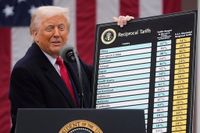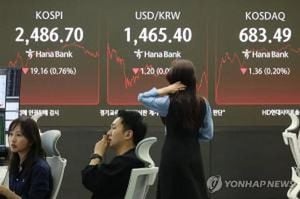The launch of USD1, a U.S. dollar-pegged stablecoin by World Liberty Financial (WLFI), a cryptocurrency platform linked to President Donald Trump’s family, is raising concerns in Congress. Introduced in March 2025, the stablecoin comes at a time when lawmakers are actively working on stablecoin legislation, and some are worried that its launch could complicate bipartisan efforts to establish regulatory frameworks.
While some view the introduction of USD1 as a positive step for cryptocurrency adoption, others express apprehension about potential conflicts of interest arising from Trump’s family’s involvement in the project. Senator Elizabeth Warren has been particularly vocal, referring to USD1 as a “grift.” She warns that any legislation that benefits stablecoin issuers could financially advantage Trump’s family, creating a perception of impropriety.
Critics are concerned that the passage of such bills could be interpreted as aligning with Trump’s interests, potentially leading to delays or stricter regulations on the stablecoin market. In contrast, proponents argue that USD1’s features align with key elements of the proposed legislation, suggesting it could provide necessary clarity in the evolving financial landscape.
Trump’s increasing footprint in the cryptocurrency sector, which includes ventures into meme coins, NFTs, and Bitcoin mining, adds further complexity to the legislative discussions. Representative French Hill, a member of the House Financial Services Committee, noted that Trump’s activities related to stablecoins are complicating efforts to pass meaningful legislation. As a result, there are fears that the growing political entanglement may hinder progress on critical regulatory measures.
Despite these concerns, there is bipartisan support for stablecoin legislation. The GENIUS Act is currently advancing through the Senate, while the STABLE Act is expected to be voted on by the House Financial Services Committee soon. Representative Bryan Steil, chair of the House panel on digital assets, indicated that while the two bills are approximately 80% similar, they still require reconciliation before moving forward.
As the legislative process unfolds, the tension between innovation in the cryptocurrency sector and the need for regulatory oversight remains palpable. The ongoing debate surrounding stablecoins exemplifies the challenges lawmakers face as they navigate the intersection of finance and politics.
In a separate but related development, more than 100 countries are bracing for new tariff measures announced by President Trump on April 1, 2025. Dubbed “Liberation Day,” this announcement introduced a universal 10% tariff on imports from dozens of nations, marking the highest import taxes seen in a century. Trump claims these measures will usher in a new era for Americans, who he asserts have been “ripped off” by global trade practices.
In his announcement, Trump emphasized the imposition of what he calls “reciprocal tariffs,” which he claims amount to about half of what other countries charge the United States. However, he has not provided a detailed explanation of the calculations behind these tariffs, which are based on allegations of currency manipulation and other trade barriers, such as VAT, that he believes hinder fair trade.
Interestingly, neither Mexico nor Canada was mentioned during the tariff announcement, a surprising omission given Trump’s previous threats directed at these neighboring countries throughout his presidency. While the president had previously indicated that tariffs would be implemented in March, he later postponed the announcement until April 1, 2025.
Despite the new tariffs, the National Emergency related to drug trafficking and migration remains in place for both Mexico and Canada. Consequently, a 25% tariff continues to apply to imports that do not comply with the United States-Mexico-Canada Agreement (USMCA).
The ramifications of these tariff measures are expected to be significant, potentially affecting international trade dynamics and economic relations. As the U.S. grapples with its trade policies, the intersection of Trump’s cryptocurrency ventures and aggressive trade strategies presents a complex landscape for lawmakers and business leaders alike.
The dual developments of the USD1 stablecoin launch and the sweeping tariff measures underscore the intricate relationship between politics, economics, and the evolving financial ecosystem. As Congress continues to deliberate on stablecoin regulations and the implications of Trump’s tariff policies unfold, the future of both cryptocurrency and international trade remains uncertain.





